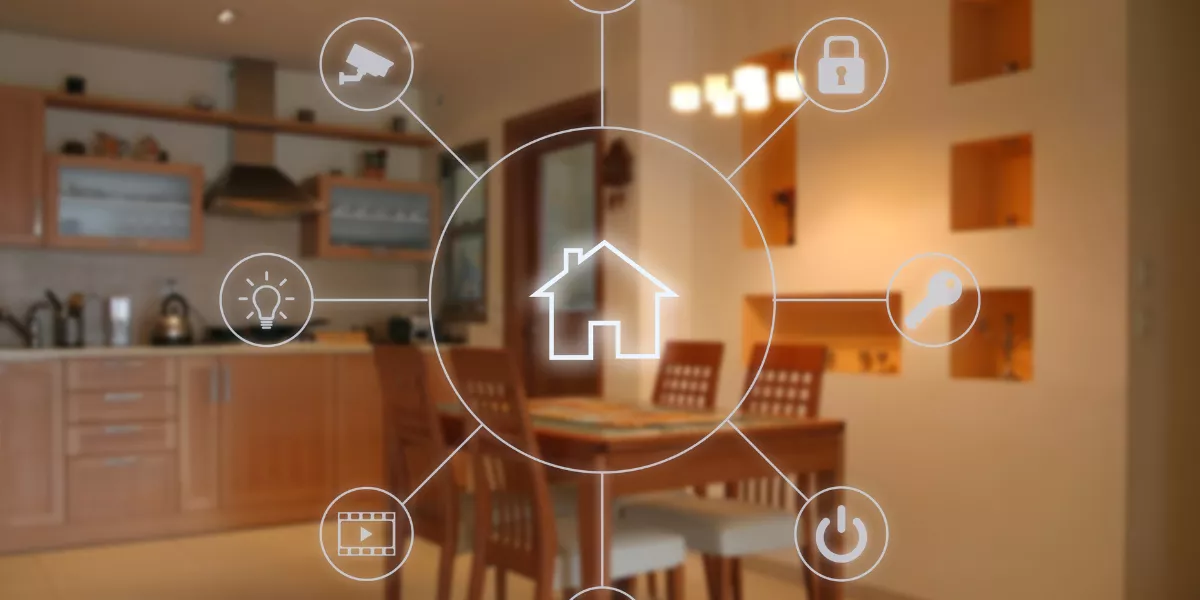
Smart home technology is set to transform in the next decade, offering you seamless connectivity and integration between devices, personalized AI features that adapt to your preferences, advanced energy solutions for efficiency, an expanding IoT ecosystem for enhanced daily living, and augmented reality experiences that bring virtual elements into your home. Get ready to experience a new level of smart home innovation.
Enhanced Connectivity and Integration
Enhanced connectivity and integration have revolutionized the way smart home devices interact with each other, creating a seamless and efficient network within homes. With the advancement of technology, your smart devices can now communicate effortlessly, allowing you to control them from a single interface. Imagine being able to adjust your thermostat, turn off lights, and lock doors, all from your smartphone, regardless of your location.
This interconnected system not only enhances convenience but also improves energy efficiency. Your smart home can learn your habits and preferences, adjusting settings automatically to optimize energy usage. For example, your lights can dim when it's time for bed, or your thermostat can adjust to your preferred temperature without manual input.
Moreover, enhanced connectivity enables different devices to work together harmoniously. Your smart speakers can communicate with your security cameras, triggering alerts or actions based on specific events. This level of integration provides a sense of security and control, making your home not just smart but also safe.
AI-Powered Personalization Features
With AI-powered personalization features, your smart home technology can cater to your specific needs and preferences seamlessly. Imagine coming home after a long day, and your smart home adjusts the lighting, temperature, and music to your liking without you having to lift a finger. AI algorithms can learn your daily routines, preferred settings, and even anticipate your needs based on past behavior. For example, if you always lower the blinds at a certain time, your smart home can start doing it automatically for you.
These personalization features extend beyond just convenience. AI can analyze your energy usage patterns and suggest ways to optimize your consumption, helping you save money and reduce your environmental impact. Additionally, with voice recognition technology, your smart home can recognize individual family members and tailor responses and actions accordingly.
As AI continues to advance, the personalization capabilities of smart home technology will only become more sophisticated, making your living space truly intuitive and tailored to your lifestyle.
Advanced Energy Efficiency Solutions
To optimize your energy consumption and promote sustainability, smart home technology offers advanced solutions for enhancing energy efficiency. By integrating smart thermostats, you can regulate heating and cooling based on your preferences and daily routines, leading to significant energy savings. These devices learn your habits and adjust the temperature automatically, reducing waste without compromising comfort.
Smart lighting systems are another key component in improving energy efficiency. They enable you to control lights remotely and set schedules, ensuring that energy is only used when needed. Additionally, the integration of motion sensors can automatically turn off lights in unoccupied rooms, further reducing electricity usage.
Furthermore, smart appliances such as refrigerators, washing machines, and dishwashers can communicate with the grid to run during off-peak hours when electricity is cheaper and more environmentally friendly. This not only cuts costs but also lessens the strain on the energy infrastructure.
Expansion of IoT Ecosystem
The IoT ecosystem is rapidly expanding, connecting a multitude of devices and systems to enable seamless communication and automation within smart homes. This growth allows various devices like smart thermostats, lighting systems, security cameras, and kitchen appliances to interact with each other, enhancing convenience and efficiency in your daily life.
As the IoT ecosystem expands, interoperability among different brands and devices becomes crucial. Manufacturers are increasingly focusing on developing open standards to ensure compatibility between products from diverse companies. This compatibility not only simplifies the setup and operation of smart home systems but also provides you with the flexibility to choose the devices that best suit your needs without worrying about integration issues.
Furthermore, the expansion of the IoT ecosystem opens up opportunities for innovative services and applications. For instance, smart assistants like Amazon Alexa and Google Assistant can now control a wide range of IoT devices, offering you a centralized way to manage your smart home. With ongoing advancements, the IoT ecosystem is poised to continue growing, offering even more interconnected and intelligent solutions for your home.
Augmented Reality Home Experiences
As your smart home technology evolves, the integration of augmented reality enhances your home experiences by blending virtual elements with your physical environment.
Imagine walking into your living room and using AR glasses to visualize different furniture arrangements before actually moving anything. With augmented reality, you can redecorate your space virtually, saving time and effort.
Moreover, augmented reality can turn a regular movie night into a thrilling experience. You could watch films where characters appear to interact with your surroundings, creating an immersive viewing experience right in your own home.
Additionally, AR can assist you in various tasks around the house. Whether it's guiding you step-by-step through a DIY project or providing cooking tutorials in your kitchen, augmented reality makes learning and executing tasks easier and more engaging.




